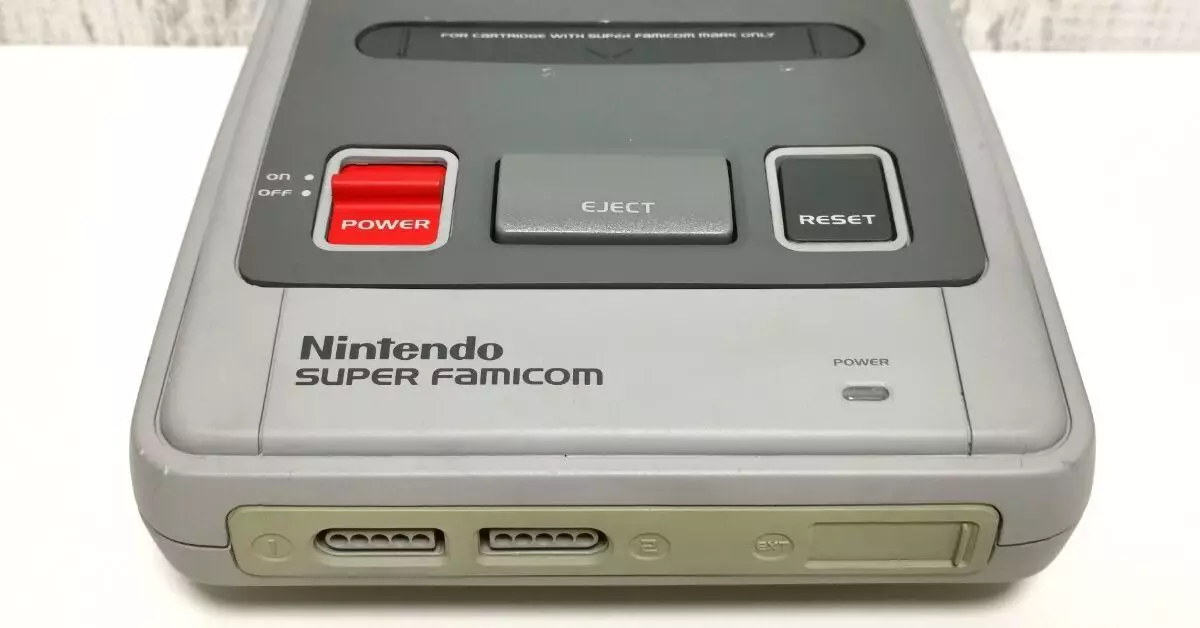On the Japanese Yahoo Auctions site, an intriguing piece of gaming history has surfaced – an apparent pre-production version of the Super Famicom, the Japanese equivalent of the Super Nintendo (SNES). This prototype version showcases several key differences from the final released model, such as a headphone jack and volume wheel on the side, as well as a big red power switch and controller ports located on the left side of the console.
One of the standout features of this prototype is the placement of the controller ports on the left side, a departure from the centered ports on the final production model. Additionally, the console sports what appears to be an expansion port on the front, a design choice that differs from the bottom placement of the final version. The yellowed panel surrounding the controller ports adds to the vintage charm of this rare find, a nostalgic nod to the aging process of classic gaming consoles.
When comparing the prototype to the final release of the Super Famicom, it is evident that several design elements were modified or omitted in the production version. The chunky, boxy design of the US SNES, with its purple sliding switches on top, starkly contrasts with the sleek and streamlined appearance of the prototype. Despite a revised version of the SNES released in 1997, the original design aesthetics of the prototype remained unmatched in subsequent iterations of the console.
The discovery of this Super Famicom prototype adds to a growing collection of lost Nintendo prototypes that have surfaced in recent years. From the Nintendo / Sony PlayStation prototype purchased by Greg McLemore to the unreleased, wired version of the Wiimote sold at auction, these rare finds offer a glimpse into the evolution of gaming technology. The current bidding price for the Super Famicom prototype on the auction site reflects the value and significance placed on these one-of-a-kind artifacts, with collectors and enthusiasts eagerly vying for a piece of gaming history.
Overall, the Super Famicom prototype serves as a tangible link to the past, a remnant of a bygone era of gaming innovation. As technology continues to evolve and transform the gaming landscape, these rare prototypes remind us of the craftsmanship and ingenuity that laid the foundation for the consoles we know and love today.


Leave a Reply